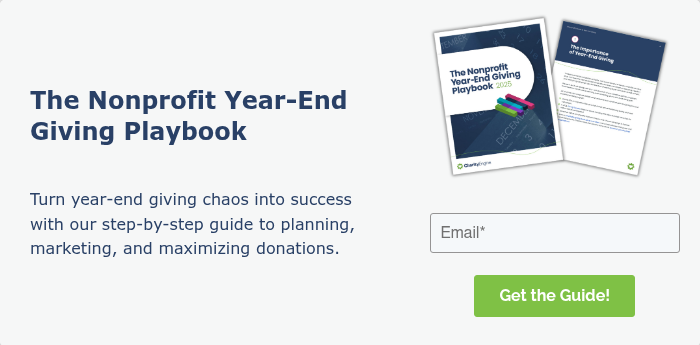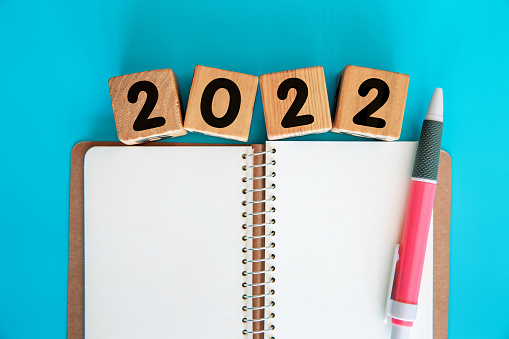Avoid these 10 Common Mistakes in Year-End Fundraising
 by Julie Kennon
by Julie Kennon
Last updated: November 12, 2025
Don’t let small mistakes steal big gifts. These quick fixes will help you raise more and stress less this year-end!
%20(9).png)
Year-end is the biggest of the big fundraising deals for nonprofits. We all know how critical this season is to put a big exclamation point on your impact this year, but there’s so much going on that it can be tough to make sure you’re doing everything you can to crush your goals.
If you’re feeling behind or a little overwhelmed, you’re not alone. The good news? There’s still time to make this your strongest finish yet.
In this article, we’ll cut through the clutter and list ten common mistakes we often see – and these can cost you donations. Take a quick look, and if anything looks familiar, you’ve got time to fix it!
Make Sure You’re Not…
1. Waiting Until December to Go Big
Don’t hold back your best messages, thinking that the final three days of the year will give you the biggest result. They might, but only if you’ve built a good case over the past weeks. Ramp up communications now, and you’ll see the benefits even before Giving Tuesday.
Whatever you are holding back, whether it’s a time-bound fundraise-a-thon, a day of calling and thanking donors, or a big push to increase recurring giving, now’s the time. Launch it, see how it does, and tweak it if needed.
Best case scenario? It’s so successful that you need to come up with another good idea!
2. Sending Just One Email
It’s easy to send a request for year-end gifts and then think you’ve checked the box and you’re okay. People need to see your message many times before they’ll be compelled to act.
Think of creating a short series of emails if you don’t have the bandwidth for a full-fledged campaign. Your first email should touch hearts – talk about the mission and why it matters. Your second email can talk specifically about how donor support impacts the mission. The third can invoke urgency to convert that donor and get their support. And the fourth is an instant thank-you message.
3. Talking About Your Goal, Not Your Impact
It does not inspire donors to help you hit $50,000 in funds raised.
Donors want to give to people. They want to give to missions that matter. When someone donates to a good cause, they get a moment to feel like a hero in that story. They are fighting food insecurity, or saving animals, or advocating for a cure.
Tell a story that shows exactly what a donation will do. Who does it help, what lives or circumstances does it change, and why does it matter now? Real impact beats a thermometer graphic every time.
4. Forgetting About Recurring Gifts
Of course you want those one-time donations, but asking for the gift to be recurring won’t hurt your chances of securing a donation. Always offer people the option to make a recurring gift. Even if just 10% of donors choose it, that’s steady, predictable income all year long.
You can add a checkbox to your donation form labeled “Make this a monthly gift.” You can even be cheeky in your appeal and ask for monthly gifts, and highlight how those gifts make a difference ($20 a month feeds a child a hot breakfast every morning for 30 days).
5. Neglecting Your Donor Data
Your donor data is your year-end superpower, but only if it’s clean and current. If your lists are messy or incomplete, your campaign will suffer.
So before you send another email or fundraising appeal, take a little time to check through some things:
- Are your top donors properly labeled or tagged and segmented?
- Are all your email addresses valid? Look at the last email you sent. If you had bounces, update the information or remove them from your list.
- Have you identified lapsed donors or donors who might be willing to give more, or monthly?
Accurate data means your messages land where they should and that your content will resonate. You want the stewardship to feel personal, which is easy (and automated) with clean data and a good CRM. While you’re checking tasks off, go through the process of donating a small amount to your nonprofit. You’ll be able to verify that the donation form and payment processing are all working smoothly and are frictionless.
6. Treating All Donors the Same
Not all supporters need to hear the same message. Ensure you’re segmenting your audiences! Common groupings are recurring givers, first-time donors, event attendees, younger or older donors, major gifts, DAF givers, and even volunteers. Then customize your messages.
Personalization doesn’t have to be complex, but it does have to be heartfelt. Even the smallest touches, like specifically referencing a past gift, show that you value relationships, not just donations.
7. Overlooking Mobile Giving
More than half of all nonprofit gifts now come from mobile devices. If your donation form isn’t simple, fast, and mobile-friendly, I can promise donors will quickly abandon it.
Keep forms short, limit required fields. Don’t include graphics or videos that take too long to load or aren’t optimized for mobile. Use secure, recognizable payment options like Apple Pay and PayPal.
Of course, before you launch a campaign (or even right now!), test your form on your phone. If anything frustrates you, it will frustrate your donors.
8. Ignoring Failed Payments
This is a shocker: most nonprofits lose up to 30% of their monthly giving revenue because credit cards fail or are expired. It’s considered the cost of doing business because payment processors have so much volume that they simply accept lost payments, and they expect you to as well.
Sadly, many nonprofits don’t realize how much they’re losing until it’s too late.
There are two ways to remedy this: one, ask your payment processor if they automatically update expired cards and retry failed payments. If they do, your collection rate might be closer to 80% or 85%.
Or you can book a demo with CharityEngine. We have unique billing technology called SustainerIQ that helps our clients retain up to 98% of their recurring payments. You can even add it to your existing CRM!
9. Skipping the Thank-You
You send automatic donation receipts – isn’t that enough? Not a chance. Year-end is a time to overcommunicate your appreciation, but every donation requires a separate, personalized email thanking them for their donation. You can reference the exact amount of the gift, explain how it will be used, and offer sincere gratitude for their support.
This is all easy and automatic in your CRM, but it makes your donors feel seen. You’ll not only encourage a repeat gift, but you’ll build loyalty that will last well past December 31.
10. Failing to Measure and Learn
Every campaign and every giving season should help the subsequent one be better. Whether it’s better because it’s smoother on the back end, because you raise more money, or because you inspire more new donors, there’s always a tweak that can help you improve.
This is a two-fold recommendation.
Start now by looking backwards, at your last campaign. What channels brought in the most gifts? What emails had the highest open rates and click-through rates? What messaging landed and compelled action?
And then, once the dust settles, review the same things. Create a list of things that might bring you more success next time. It’s a blueprint for your next campaign! Capture these insights while they’re fresh.
Finish Strong and Build Momentum for Next Year
Year-end fundraising isn’t just about closing the books on this year’s goals; it’s about setting the stage for a stronger, smarter year ahead. Every lesson you learn now, every process you tighten, and every donor relationship you nurture becomes the foundation for next year’s growth.
Take the time to clean your data, fine-tune your systems, and test what works best for your audience. When you enter January with clean lists, engaged donors, and proven strategies, you won’t just recover from the year-end rush – you’ll start the new year ahead of the curve.
And of course, if you’re ready to streamline your fundraising and donor management, book a quick demo with CharityEngine. Our all-in-one CRM, built-in payment processing, and tools like SustainerIQ help nonprofits like yours raise more, retain more, and do it all with less stress.



.png)

